Leeds museum features midwife's story as migrant
- Published
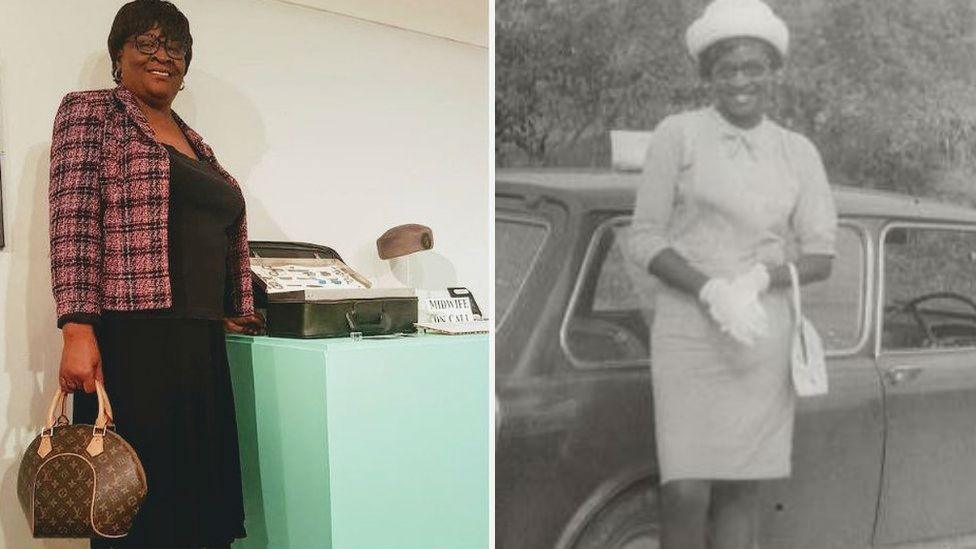
When she first arrived in England Gloria Hanley remembers having no coat and being very cold
An African-Caribbean midwife who used humour to overcome racism in Leeds features in a new exhibition on how migrants have helped shape the city.
Gloria Hanley left St Kitts aged 18 in 1968, seizing upon a chance to train in England as a nurse.
She arrived in Leeds in the 1970s where she worked as a NHS midwife, delivering hundreds of babies, many of them in Harehills.
Her journey is one of dozens being told at an exhibition at Leeds City Museum.
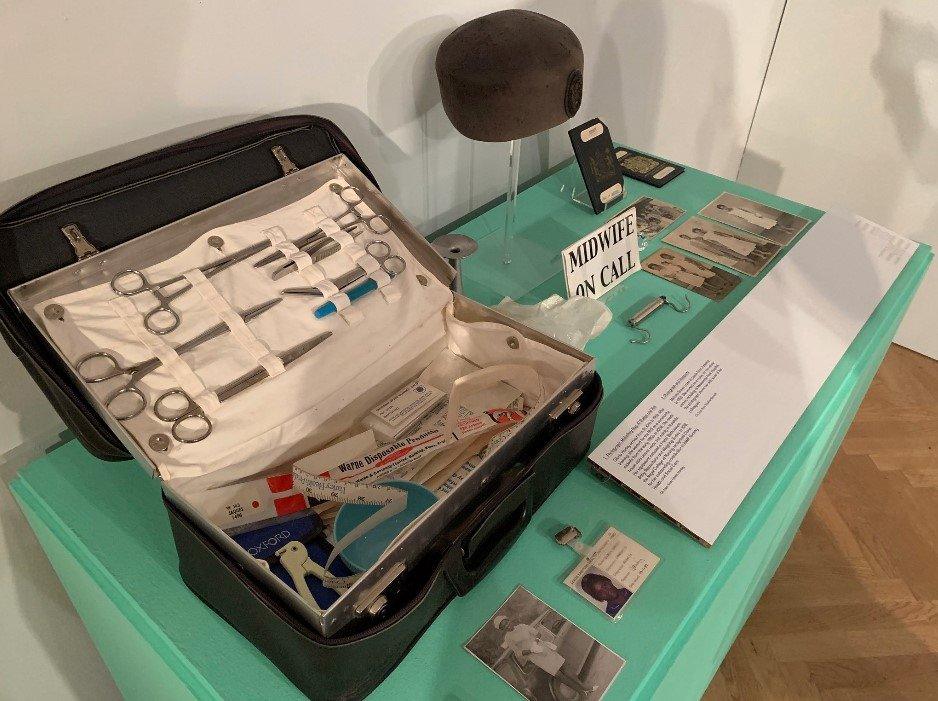
The midwife's bag included a foetal stethoscope, baby resuscitator and weighing scales
Titled 'A City and its Welcome: Three centuries of migration to Leeds' it looks at the many different people who have travelled to the city to make a new life for themselves.
Among the exhibits are family heirlooms and photographs loaned by members of the Jewish, Irish, Muslim and Sikh communities.
Illustrating Ms Hanley's story are her midwifery bag, ID badge and the hat she used to wear.
Now aged 71 and retired, she recalls her early experiences in the city she now considers home.
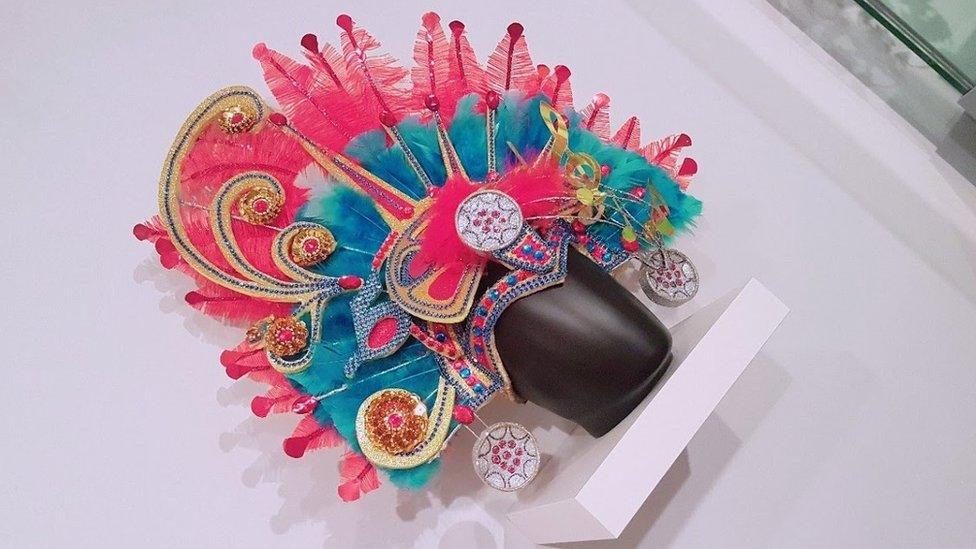
On a display are headdresses, which are an important part of the Leeds West Indian carnival
"Love brought me to Leeds but when I first arrived I wasn't impressed at all but then I soon got acclimatised," she said.
"I'd come up from London where I'd been training and what struck me about Leeds was how integrated it was.
"In London, you didn't see a lot of black and white people together.
"But here, I remember going to a party and thinking 'wow, white people are here'."
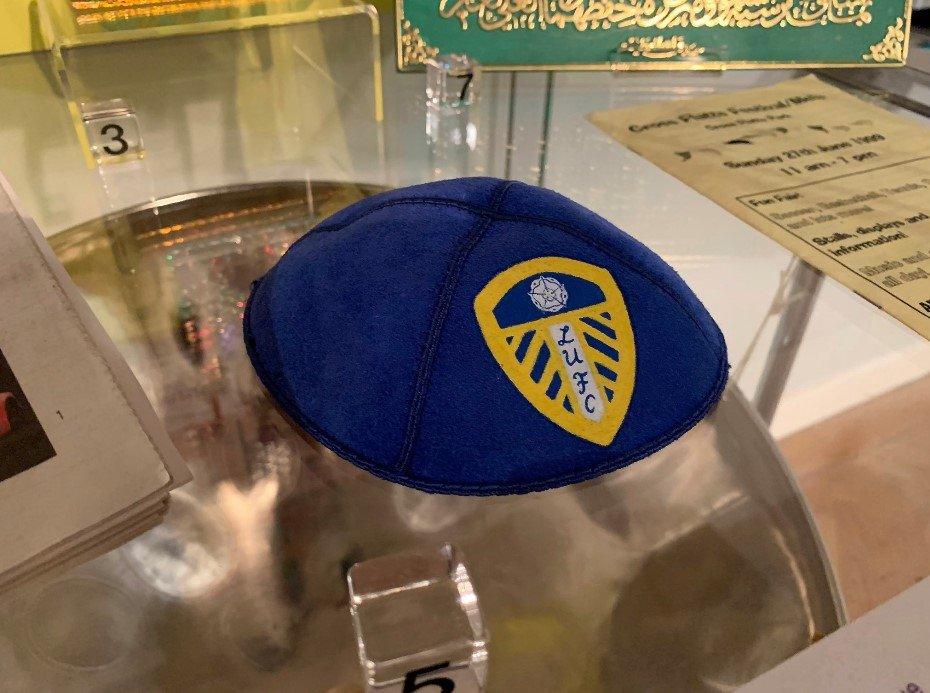
A traditional Jewish kippah customised with a Leeds United badge has been donated by a fan
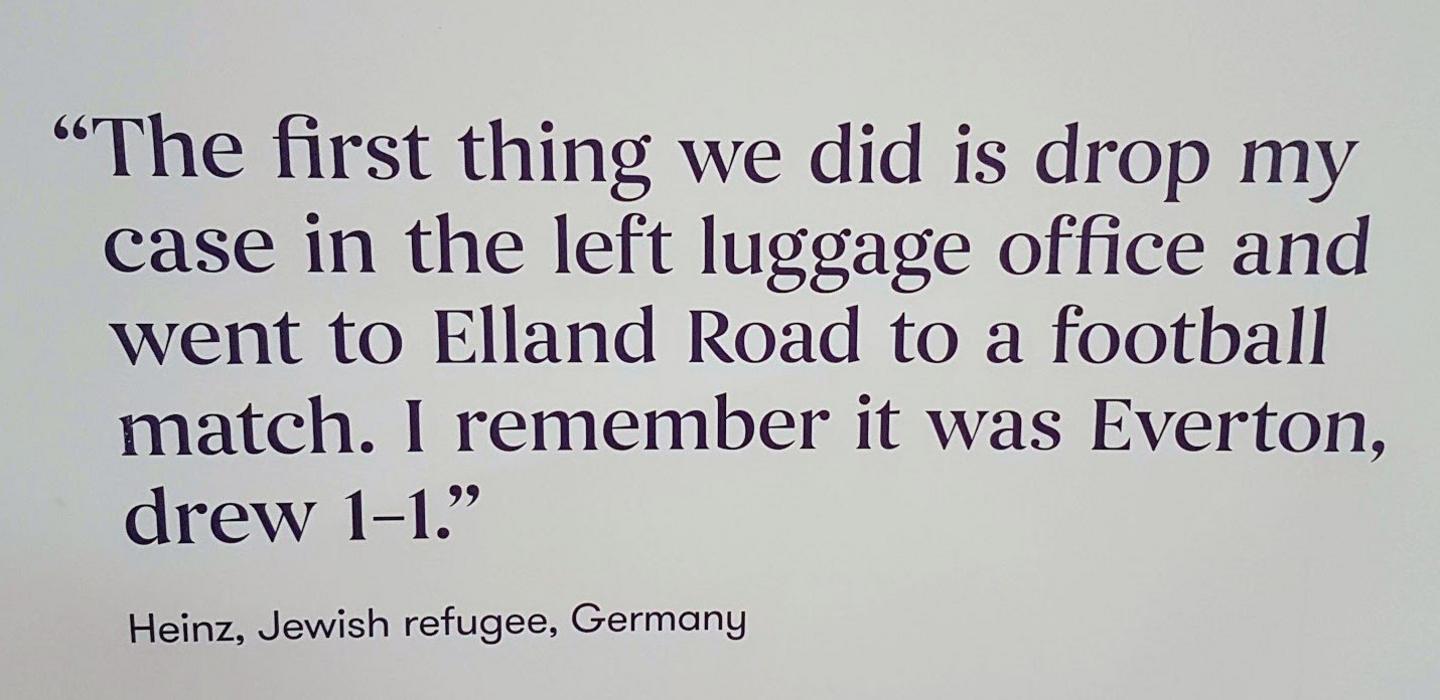
War was one of the reasons many migrants came to Leeds
During her career, she worked at the old Hyde Terrace hospital and the former Hospital for Women before becoming a community midwife, where she cared for families mainly in Harehills.
"There were many husbands who did not want to let me into their homes," she recalled.
"I remember one gentleman who didn't want a black midwife touching his baby. I told him don't worry, my colour won't rub off on him.
"He was still refusing to let me in so I said 'no problem, just throw the baby out of the window'.
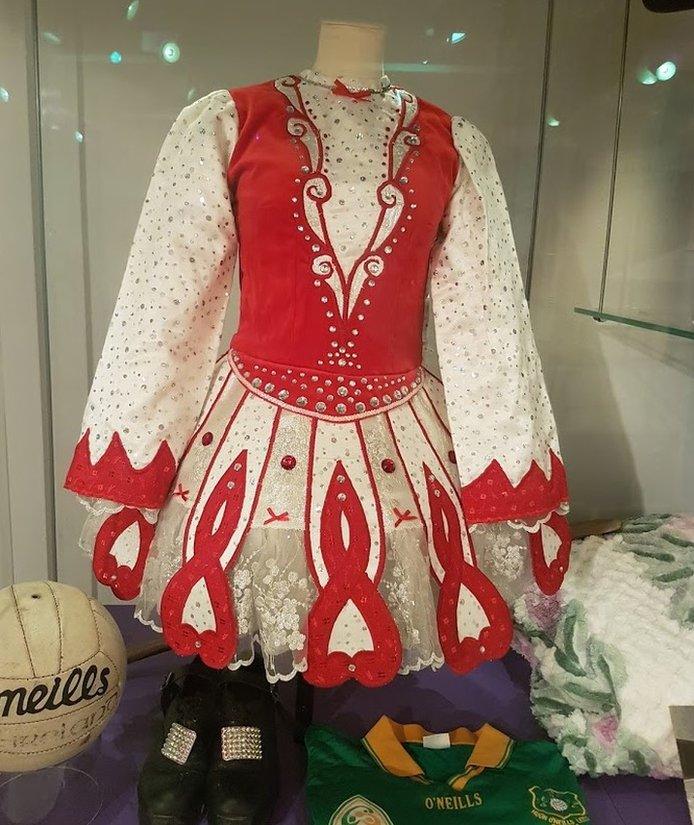
This dance costume illustrates the substantial Irish community in the city which has been present for almost two centuries
She added: "I've always treated racism with humour and managed to break down barriers every time.
"My main aim was always to get into the house and care for the mother and baby."
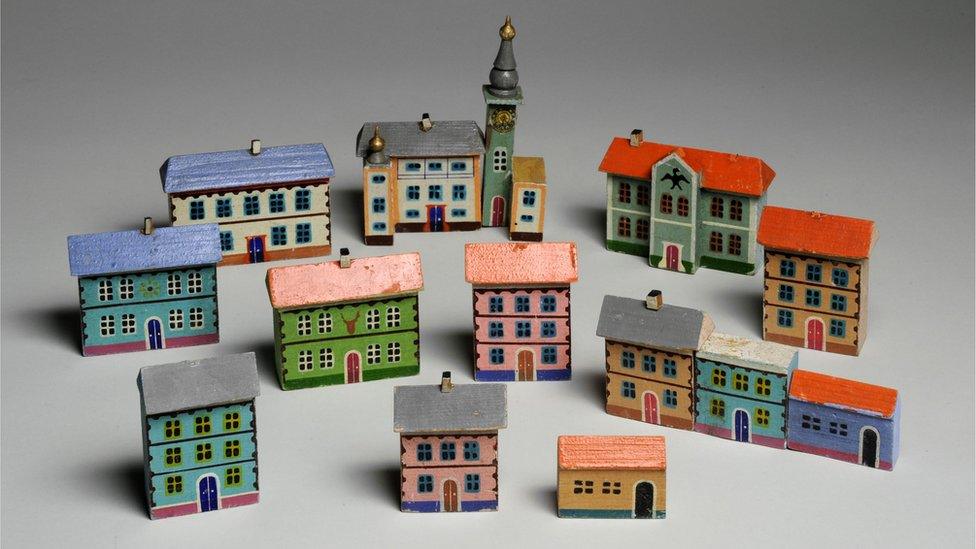
The exhibition is open until 5 January at Leeds City Museum
Other items on display include a collection of toy houses brought to Leeds by Eva Mitchell from former Czechoslovakia in 1938.
Curator Ruth Martin said: "Migration is core to the story of Leeds.
"The city wouldn't the same unique place it is today without the knowledge, individuality and heritage they brought with them."